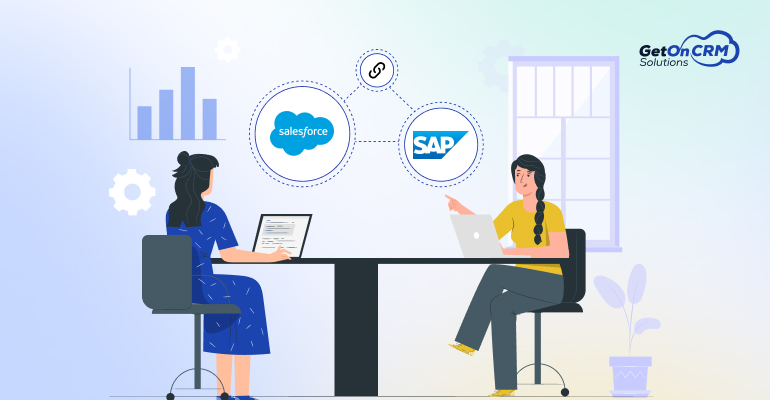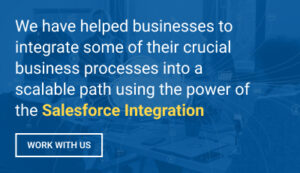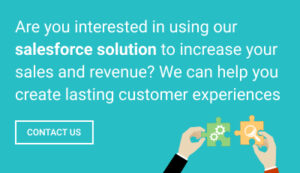In today’s fast-paced business environment, Customer Relationship Management (CRM) and Enterprise Resource Planning (ERP) have become indispensable tools. CRM systems like Salesforce help businesses manage their customer interactions, while ERP systems like SAP streamline internal processes such as finance, HR, and supply chain management.
Salesforce and SAP are market leaders in their respective domains, boasting comprehensive CRM features to give businesses an overall view of customer interactions and ERP capabilities to optimize internal operations. Both platforms are essential components for scaling and increasing efficiency within any industry.
The Need for Salesforce SAP Integration
Integrating Salesforce and SAP can be transformative for businesses. It enables seamless data flow between customer-facing operations and internal ones, increasing efficiency and customer satisfaction simultaneously. But integration is more than a technical upgrade – it’s about transformational change!
The Basics of Salesforce and SAP
What is Salesforce?
Salesforce is a cloud-based CRM platform that helps businesses manage their sales, customer service, and marketing activities. It offers various modules and features like lead tracking, opportunity management, and customer segmentation, among others.
What is SAP?
SAP (Systems, Applications and Products in Data Processing) is an ERP software used by businesses to manage internal processes efficiently. With modules for finance, HR and supply chain management as well as an overall view of operations – SAP provides firms with an effective tool to run their daily operations smoothly.
The Synergy Between Salesforce and SAP
Businesses that integrate Salesforce and SAP can achieve unparalleled operational efficiency and customer engagement. Salesforce can feed customer information into SAP for improved inventory control while SAP sends financial data back to Salesforce for accurate sales forecasting.
Understanding SAP Integration Suite
What is SAP Integration Suite?
The SAP Integration Suite is an expansive collection of tools and services designed to ease the integration of various systems, such as Salesforce. It includes pre-built connectors, templates and APIs, which simplify and expedite the process.
Why Choose SAP Integration Suite for Salesforce Integration?
SAP Integration Suite is ideal for Salesforce integration due to its robust security features, data mapping tools and scalability options. These can easily adapt to meet the changing demands of your business.
The Technical Aspects of Salesforce SAP Integration
Integrating Salesforce and SAP requires careful thought when it comes to architecture. Businesses may use middleware solutions or direct API calls for this purpose. Yet, they should ensure their architecture can handle large volumes of data while remaining flexible enough for future business needs.
Data Mapping and Transformation
One of the most critical aspects of Salesforce SAP integration is data mapping and transformation. It involves aligning fields in Salesforce with their corresponding fields in SAP, ensuring that data flows seamlessly between the two systems. Data transformation tools can convert data formats, units, or values to ensure compatibility.
Security Considerations
Security is a paramount concern when integrating two powerful platforms, Salesforce and SAP. Businesses must ensure that the integration adheres to compliance standards like GDPR and employs encryption and authentication protocols to safeguard data.
Benefits of Salesforce SAP Integration
Streamlined Operations
Integrating Salesforce and SAP can transform business operations. Sales data from Salesforce can automatically update inventory levels in SAP, eliminating manual entry and the potential for mistakes.
Enhanced Customer Experience
Integrating Salesforce and SAP allows businesses to provide customers with a more tailored, efficient customer experience. Data from Salesforce can be utilized within SAP in order to meet customers’ needs and exceed their expectations.
Data-Driven Decision Making
The integration enables more effective data analytics and reporting. Businesses can pull information from both systems into a central dashboard to access insightful analytics that drives data-driven decision-making.
Also Read: The Ultimate Guide To Salesforce And ERP Integration
SAP Cloud Integration in the Mix
What is SAP Cloud Integration?
SAP Cloud Integration is a cloud-based integration service designed to streamline the process of connecting various applications and data sources. It features pre-built connectors and templates similar to what is found within SAP Integration Suite but with additional cloud scalability features.
How SAP Cloud Integration Facilitates Salesforce Integration
SAP Cloud Integration makes connecting Salesforce to SAP easier by providing cloud-based tools and services, giving businesses greater scalability without infrastructure limitations limiting them.
Case Studies
Success Stories of Businesses Using Salesforce SAP Integration
E-commerce Giant Streamlines Order-to-Cash Process
Before integration, an e-commerce company experienced bottlenecks in its order-to-cash process that led to delayed deliveries and customer dissatisfaction. Once integrated, Salesforce CRM could instantly notify SAP ERP of new orders placed via Salesforce CRM and trigger immediate inventory checks and order fulfilment, resulting in 30% increased operational efficiency and 20% greater customer satisfaction.
Manufacturing Firm Enhances Supply Chain Visibility
The manufacturing firm needed help with supply chain visibility, leading to stockouts and overstock situations. After integrating Salesforce and SAP, the sales forecasts from Salesforce were used to adjust procurement and production schedules in SAP. This real-time data sharing led to better inventory management, reducing carrying costs by 15% and elim
Also Read: How to Integrate Salesforce with Your Manufacturing ERP System
Lessons Learned
Data Consistency Challenges
Maintaining data consistency is a common challenge. One business faced issues when customer addresses were updated in Salesforce but not in SAP, leading to shipping errors. Real-time data synchronization was implemented to resolve this.
Importance of Pilot Testing
Businesses emphasized the importance of pilot testing to identify potential issues. One company discovered during the pilot that their legacy SAP system needed an upgrade to be compatible with the latest Salesforce APIs. This early discovery prevented costly delays.
Future Trends
Technology advancement opens up endless opportunities for Salesforce and SAP integration. Current trends include using artificial intelligence for automating data mapping as well as real-time IoT devices that collect real-time information.
Why Staying Updated Matters
The world of technology is ever-changing, and staying updated is crucial for business success. New features and functionalities are continually being added to both Salesforce and SAP and keeping your integration solutions up-to-date is essential for maximizing benefits.
Calculating the ROI of Salesforce SAP Integration
Efficiency Metrics
Operational efficiency can be measured by tracking metrics such as order processing time, which should decrease from several days post-integration to just hours or so. Customer response time could also improve, further increasing customer satisfaction and, ultimately, sales.
Revenue Growth
One business reported post-integration that they saw a 25% increase in cross-selling and upselling opportunities, leading directly to revenue growth. Their return on investment (ROI) was calculated by comparing this additional revenue against their total cost of integration.
Best Practices and Recommendations
Best Practices for Salesforce SAP Integration
Thorough Planning
A detailed project plan should include not just timelines but also contingency plans for potential setbacks. Risk assessment should be part of the planning phase to prepare for any challenges that may arise during the integration process.
Involving Key Stakeholders
The inclusion of key stakeholders from both Salesforce and SAP teams ensures the alignment of objectives. Regular meetings should be held to update all parties on the progress and to make any necessary adjustments to the plan.
Vendor Selection: What to Look For
Reliability and Expertise
Search for vendors with extensive experience who can demonstrate successful integrations, customer testimonials and case studies are great ways of getting an understanding of their reliability and expertise.
Why Choose GetOnCRM Solutions?
GetOnCRM Solutions offers a range of Salesforce integration services, including SAP integration. Our team of certified experts ensures that the integration process is smooth and efficient, tailored to meet your specific business needs. Our focus on customer satisfaction and proven track record make them a reliable choice for your Salesforce SAP integration needs.
Conclusion
Integrating Salesforce and SAP is not just a technical endeavour but a strategic business decision. From streamlining operations to enhancing customer experience and enabling data-driven decisions, the benefits are manifold. However, the key to successful integration lies in meticulous planning, choosing the right tools, and staying updated with the latest trends.
If you’re considering Salesforce SAP integration, the first step is to assess your business needs and set clear objectives. Once that’s done, you can proceed with vendor selection, budget allocation, and project planning. Remember, the goal is not just to integrate but to transform your business.























